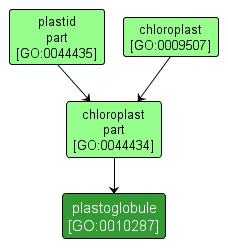| Desc: |
Plastoglobules (PG) are lipoprotein particles present in chloroplasts. They are rich in non-polar lipids (triglycerides, esters) as well as in prenylquinones, plastoquinone and tocopherols. Plastoglobules are often associated with thylakoid membranes, suggesting an exchange of lipids with thylakoids. |














